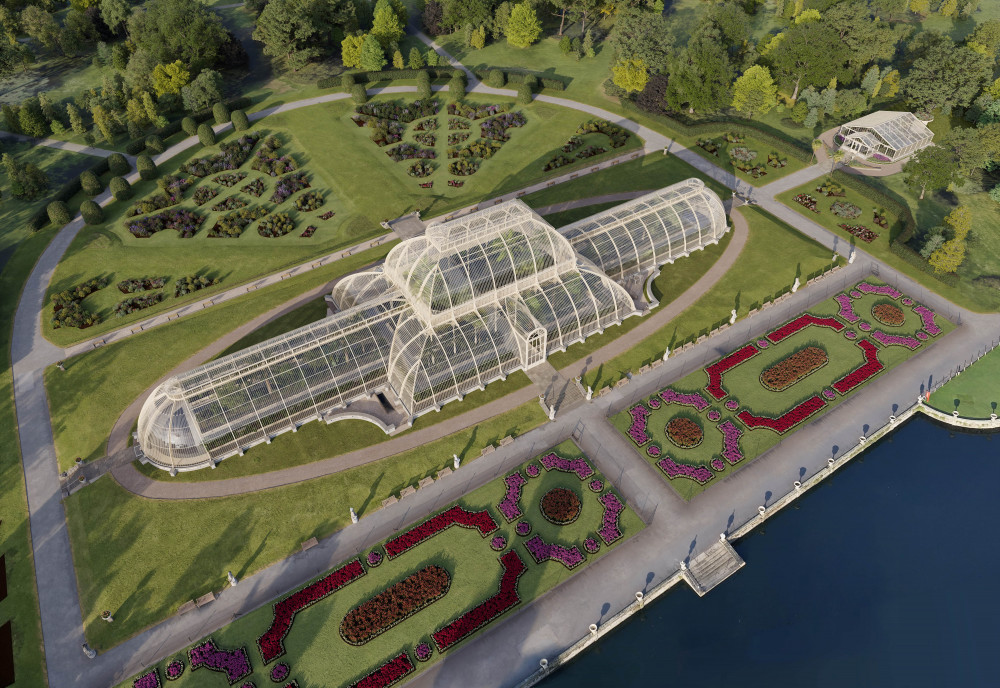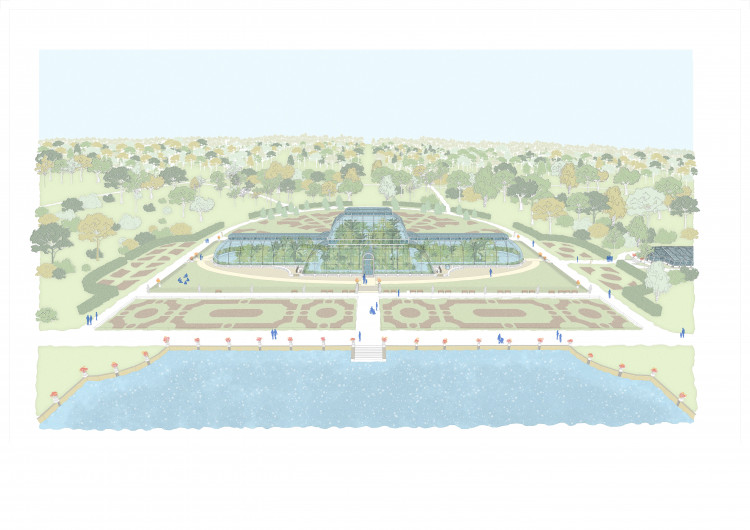Kew Gardens submits world-first plan to make Palm House net zero
By Cesar Medina 16th Jul 2025
By Cesar Medina 16th Jul 2025

Royal Botanic Gardens, Kew has submitted a planning application to restore its Palm House and Waterlily House, transforming them into the first net-zero heritage glasshouses of their kind anywhere in the world.
The landmark proposal, submitted on Wednesday, 16 July 2025, outlines an ambitious plan to restore the much-loved Victorian structures, which are showing signs of deterioration, while improving their environmental performance for a sustainable future.
Constructed in the mid-19th century, the Palm House and Waterlily House have not undergone significant renovation since the 1980s.
Kew Gardens said that without intervention, both the buildings and the globally significant plant collections they house are at serious risk.

Richard Deverell, Director of RBG Kew, described the renovation as "a pivotal moment in the history of Kew."
"With sustainability at the core of our mission, this project exemplifies our commitment to safeguarding both the environment and cultural heritage," he said.
"The transformation of the Palm House and Waterlily House into net-zero icons will not only protect irreplaceable plants but serve as a beacon of what sustainable heritage can achieve."
The restoration will also honour the original vision of the Palm House's 19th-century designers.
Constructed using techniques from shipbuilding, the glasshouse has long been celebrated for its architectural and engineering innovation.
Kew now plans to bring that innovation into the 21st century, with pioneering work in sustainable design.

The £60 million project is being led by Kew's Capital Projects Team alongside Hugh Broughton Architects and Cundall engineers.
Key upgrades include:
- Replacing 16,500 glass panes with high-performance sealed glazing
- Using bespoke silicone gaskets to reduce heat loss
- Installing an all-electric air and water source heat pump system
- Enhancing rainwater harvesting and irrigation systems
- Carefully conserving original materials and garden layouts
- Improving accessibility across the site
The goal is to create a Victorian glasshouse that maintains the precise climatic conditions needed for tropical plant conservation while reducing emissions to net-zero.
Tom Pickering, Head of Glasshouse Collections, added: "Besides being beautiful, many of the plants in the Palm House have cultural, scientific and conservation value, and replacing these collections is unimaginable.
"Achieving net zero in these historic buildings is an unprecedented task... one which must consider the interplay of horticulture, climatic control, engineering, and architecture."

Although construction is not expected to begin until 2027, preparatory work is already underway.
Kew's expert horticulturists have begun the task of relocating and propagating over 1,000 plant species from the Palm House.
Two new sustainable glasshouses, one permanent and one temporary, have been built to care for the plants during the renovation.
Architect Hugh Broughton called the project "an exciting opportunity to conserve and decarbonise these inspiring glasshouses."
He continued: "The design elegantly reflects Kew's ambitious Climate Positive 2030 strategy, reminding us of the fragility of the rainforests and our role in their protection."

Kew's Trustees have thanked those who have already supported the project, including Defra, the Julia Rausing Trust, and the World Monuments Fund Britain. Funding will continue to be sought throughout the life of the project.
Residents and supporters can learn more or donate to the project by visiting Kew's Palm House donation page or by calling 020 8332 3246.
We want to provide Richmond with more and more clickbait-free local news. To do that, we need a loyal newsletter following. Help us survive and sign up for our free weekly newsletter by clicking the link HERE.
CHECK OUT OUR Jobs Section HERE!
richmond vacancies updated hourly!
Click here to see more: richmond jobs
Share:



















